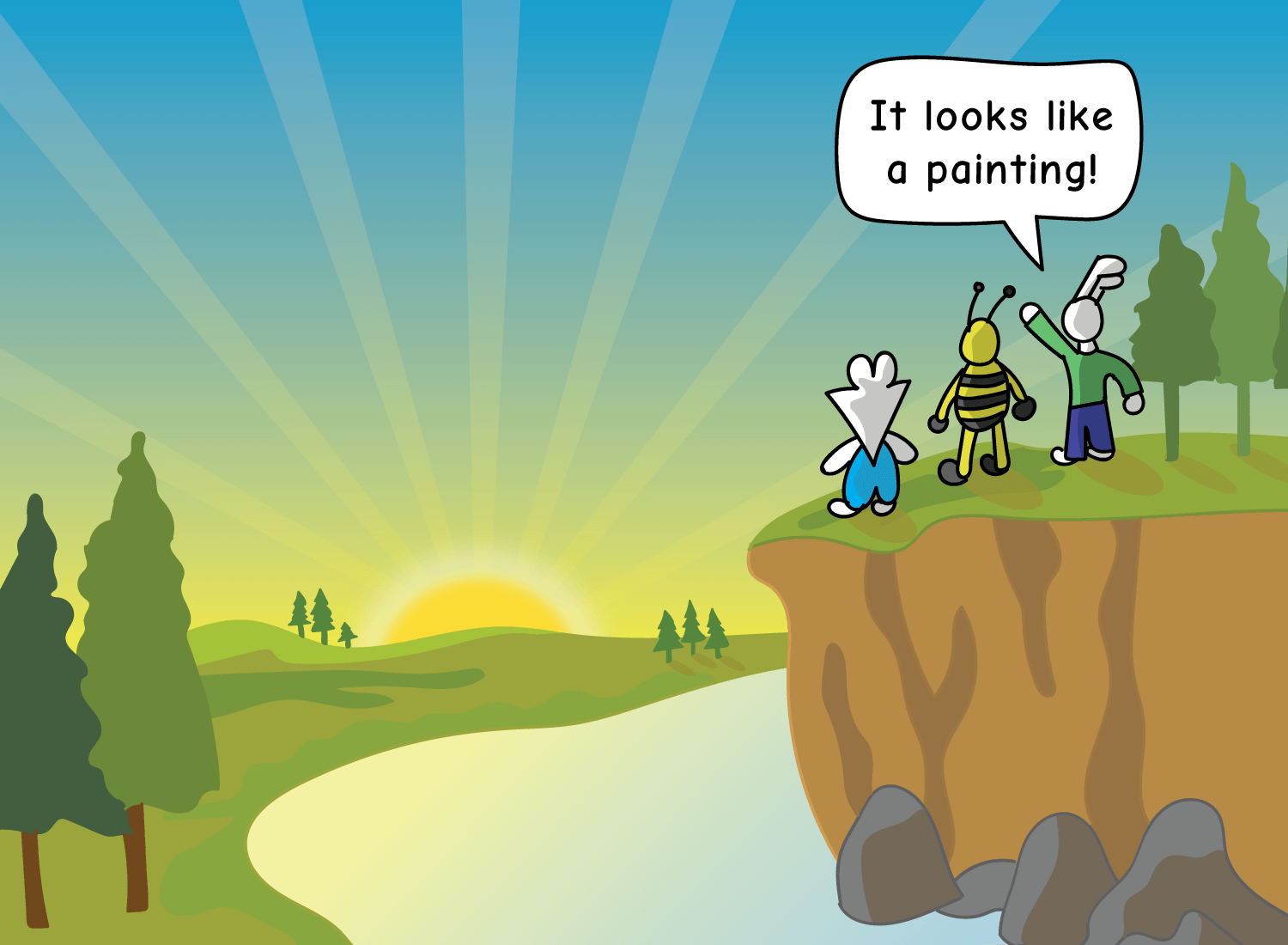The Artist Gives Us the Vision
Whenever you look at an astounding sunrise with a group of people, there will always be that one person who says:
I’ve always found this reaction to be amusing. So if you were to show me a painting of that same sunrise, would it make sense to exclaim that it looks so much like reality? Perhaps. But it would largely depend on what that painting was meant to evoke within us.
When a painter uses reality as a reference point, she isn’t necessarily trying to capture it for accuracy. A quick iPhone photo would do a far better job than she ever could at that. Rather, she’s framing reality through her own definitions of beauty and poignancy.
What about that sunrise makes it so beautiful? Is it the way the light casts shadows across the mountain ranges? Is it the gradient of colors that are briefly exposed in the daytime sky?
What about the sunrise gives her pause? Is it in the nostalgia she feels in the breeze that glances over her? Is it in the blades of grass that silently sway, reminding her of the hikes she used to go on with her father?
These are the thoughts that cycle through the artist’s mind as she paints, and they manifest in the slightest of ways. She’ll accentuate the mountain shadows, while blurring the paved roads. She’ll add details that are closer to figments of her imagination than they are products of reality. And it’s the result of all these interpretations that make her painting so beautiful.
Alan Watts once said, “It’s always the artist that gives us the vision.” What he means is that we often don’t realize what beauty is until an artist frames it as such. The artist alone has the power to turn the ordinary into the extraordinary, and vice versa. For example, most people didn’t realize that big blotches of paint could be beautiful until Jackson Pollock revealed it to them. And on the flip side, people had no idea that large distorted faces could be a facet of mainstream art culture until Picasso introduced them.
In the same way, it’s quite possible that we only appreciate the natural world because we’ve been exposed to art that personifies its beauty. As far as we know, there’s nothing inherent in our genome that gives us an appreciation for nature. At best, there may be a disposition toward symmetry (due to the allocation of facial features), but even that’s a stretch. If you take a look at the clouds that float above you now, there’s nothing about them that indicate symmetry, yet their beauty is unquestionable.
Long before paintings and photographs, we had stories that acted as nature’s allies. Almost every indigenous tribe had myths that highlighted the wonders of nature, and framed it as something to be cherished and protected. These artistic interpretations are what made people believe that it was a privilege to live amongst flora and fauna, filling them up with gratitude and a sense of belonging in the world.
In the same way that those indigenous storytellers framed nature, your role as an artist is to highlight pieces of reality that deserve appreciation. If you’re a photographer, you’re capturing the visual moments that evoke pause. If you’re a musician, you’re assembling the pattern of notes that evoke awe. If you’re a writer, you’re weaving together the ideas that evoke reflection. Regardless of the avenue of expression, your goal is to take the ordinary and elevate it into the realm of the extraordinary.
It’s this appreciation of the mundane that gives humanity its vision. The spirit of innovation is not driven by our ability to make new things, but to find new ways to present old things. Our smartphones are ingenious rearrangements of atoms, and nothing more than that. Similarly, our most revolutionary ideas are ingenious rearrangements of old ones, and nothing more than that.
But because each one of us has a unique voice and style, any old idea that is communicated through our lips or fingers becomes new. That’s the wonder of it. And by connecting this web of voices together, an artistic culture is born, and a new vision of beauty is introduced for all to see.
_______________
_______________
For three more posts of this nature:
The Arc of the Practical Creator




